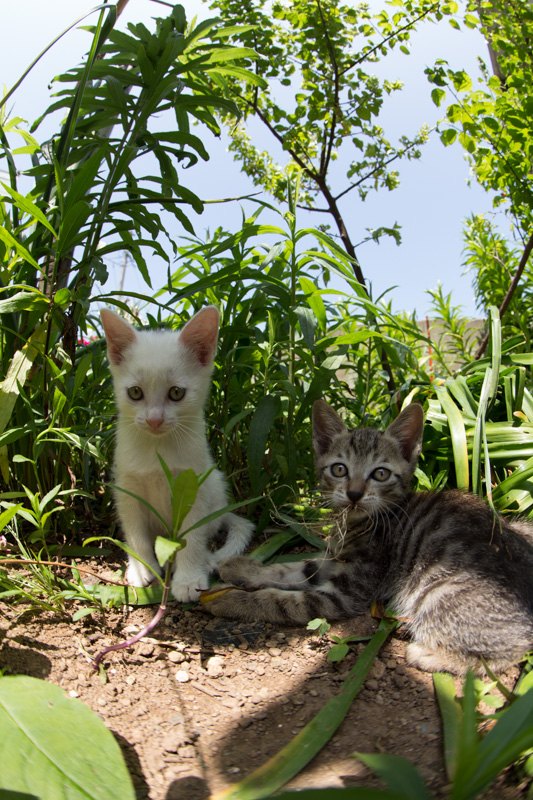City doctors are in talks with the state government to introduce the simple vinegar-based screening to check women for cervical cancer at early stages. Cervical cancer in Indian women is the topmost killer with an estimated 77,000 dying of it every year.
After having proven in the study that vinegar-based tests helped reduce the number of deaths in Mumbai by 31%, doctors are now advocating its use among 2 crore women in Maharashtra. “We are in talks with the state health department for testing women through this simple process for cervical cancer,” said Dr Indraneel Mitra, professor emeritus, Tata Memorial Hospital (TMH), Parel.
Twelve years ago, doctors at TMH started a study in the city to test the efficacy of screening women by swabbing 4% acetic acid (VIA) in her cervix and then observing her for cancerous or precancerous lesions. “We divided women into a screening and a control group of 75,000 women each. While the screening women were tested with vinegar-based swabs, the control group was counselled to approach TMH for treatment in case they experienced cervical cancer symptoms like heavy bleeding or white discharge,” said Dr Gauravi Mishra, project co-ordinator for the study, TMH.
Of 75,000 women in the screening group, 161 women were detected with cervical cancer through the VIA test. Of these, 67 died while the rest were salvaged due to early detection. On the other hand, of the group that was not tested early, 166 women were picked up with cervical cancer after they showed symptoms like heavy white discharge or torrential bleeding and were hospitalised. Of the 166 women, 98 died of cervical cancer.
“In the screening group, deaths were reduced by up to 31%. This is evidence enough for the state to comprehend that early intervention can significantly reduce cervical cancer deaths and has the potential to prevent up to 22,000 deaths across India,” said Dr Mitra.
Most of the distilled white vinegar ended up on the carpet along with whatever other contents had been in my stomach. My mom had heard from her friend that drinking vinegar “shots” would help clear out her intestinal track, and she figured I was as good a candidate as any to try it out. It worked a little too well. It wasn’t until years later that I realized my mom had missed an important piece of information — this body-cleansing, pH-balancing remedy works best using apple cider vinegar. Save the distilled white for cleaning chores.
Now, years after that unpalatable run-in with this super-versatile substance, I’ve come to love the dozens of uses for vinegar in all its forms. And it turns out, it’s not that difficult to make at home. From cutting through grease on my dirtiest skillets to adding a tangy bite to salad dressings, I keep finding more ways to use the stuff. Here are a few of my favorites:
1. Disinfectant: A natural antibacterial, vinegar makes a great base for any nontoxic cleaning solution. For an all-purpose disinfecting solution, dilute 1 part vinegar in 4 parts water and use anywhere germs are found, such as countertops, keyboards, shared phones, doorknobs and remote controls. Vinegar teams up with a little baking soda to re-incarnate into enough forms to clean your entire house.
2. Toilet Bowl Cleaner: Clean, disinfect and deodorize your toilet by pouring 1 cup of vinegar around the inside of the bowl. Let sit for an hour, use a brush to remove rings, then flush.
3. Drain Cleaner: To keep drains clog-free, pour 1/2 cup of baking soda down the drain, then follow with 1/2 cup of vinegar. Wait for foaming to subside, then follow with a gallon of boiling water. If necessary, remove hair and other debris with a wire. Repeat if drain is still slow. Got a persistent clog? Here are some more simple, chemical-free methods to clear out your drains.
4. Residue Remover: Forget the gummy, toxic Goo-Gone. Clean the glue residue that labels and stickers leave behind by wiping the sticky surface with a rag dipped in a vinegar-water solution.
5. Hair Rinse: Don’t worry: Your hair will not take on the pungent smell of vinegar. Shampoos and other hair products can leave behind residue, making hair lackluster. But there are more than simply aesthetic reasons to give up conventional shampoos (see Three Reasons to Live Shampoo Free). Remove buildup by diluting 2 tablespoons vinegar and 2 tablespoons lemon juice in 3 cups water and mixing well. After shampooing, pour rinse over hair before rinsing with water. The vinegar will close the cuticle and leave hair soft and shiny. An added bonus: It keeps dandruff at bay.
6. Stain Remover: Purge grass stains and blood spots by whipping up your own natural stain remover. Mix 1/2 cup white vinegar, 1/4 cup baking soda and 3 cups water in a spray bottle. Just spray on the stain and toss clothing into the laundry! While you’re at it, combine vinegar with a handful of other cheap ingredients for a natural laundry detergent.
7. Greens Reviver: Leafy greens looking wilted? Soak them in a bath of 2 cups cold water and 1/2 teaspoon vinegar to bring them back to life. Heck, at that point, you are not that far away from making a delicious vinegar-based salad dressing to accompany your lively greens.
8. Wart Killer: To remove unsightly warts, dip a cotton ball in vinegar, place over wart and secure with a bandage. Change the cotton ball daily. The acid in vinegar will eat away at the wart over time. (Be sure to keep the skin around the wart moisturized.) Here are a couple other natural health wart remedies with proven herbal compounds.
9. Breath Freshener: Eliminate bad breath by rinsing with 2 tablespoons vinegar and 1 tablespoon salt diluted in 1 cup water. This rinse is especially effective at removing onion and garlic odors.
10. Paintbrush Softener: Make stiff paintbrushes useful again by dipping hardened bristles in a bowl of vinegar for an hour or less. Rinse the bristles with warm water and soap, then let dry before using.
Buyer beware! As a final note, it needs to be clear that not all vinegar is created equal. While all vinegars require ethanol for production, some vinegars are made with synthetically produced ethanol made from petroleum. Check the label before you buy for words like “grain alcohol” or “neutral grain spirits” to ensure you’re buying a product made from natural food sources
Read more: http://www.care2.com/greenliving/versatile-uses-for-vinegar.html#ixzz2XFvNvqne




























![houtong-cats[2]](https://www.coronado-clarion.com/wp-content/uploads/2013/06/houtong-cats2.jpg)
























